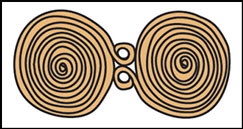Crossref Citations
This article has been cited by the following publications. This list is generated based on data provided by
Crossref.
Teržan, Biba
2021.
Notranjsko-kraška halštatska skupina.
Arheološki vestnik,
Vol. 72,
Issue. ,
p.
229.
Zavodny, E.
McClure, S. B.
Culleton, B. J.
Podrug, E.
Balen, J.
Drnić, I.
and
Kennett, D. J.
2022.
Investigating Past Livestock Mobility Using δ34S Stable Isotopes: Three Preliminary Case Studies From Prehistoric Croatia.
Open Quaternary,
Vol. 8,
Issue. ,
Lazaridis, Iosif
Alpaslan-Roodenberg, Songül
Acar, Ayşe
Açıkkol, Ayşen
Agelarakis, Anagnostis
Aghikyan, Levon
Akyüz, Uğur
Andreeva, Desislava
Andrijašević, Gojko
Antonović, Dragana
Armit, Ian
Atmaca, Alper
Avetisyan, Pavel
Aytek, Ahmet İhsan
Bacvarov, Krum
Badalyan, Ruben
Bakardzhiev, Stefan
Balen, Jacqueline
Bejko, Lorenc
Bernardos, Rebecca
Bertsatos, Andreas
Biber, Hanifi
Bilir, Ahmet
Bodružić, Mario
Bonogofsky, Michelle
Bonsall, Clive
Borić, Dušan
Borovinić, Nikola
Bravo Morante, Guillermo
Buttinger, Katharina
Callan, Kim
Candilio, Francesca
Carić, Mario
Cheronet, Olivia
Chohadzhiev, Stefan
Chovalopoulou, Maria-Eleni
Chryssoulaki, Stella
Ciobanu, Ion
Čondić, Natalija
Constantinescu, Mihai
Cristiani, Emanuela
Culleton, Brendan J.
Curtis, Elizabeth
Davis, Jack
Davtyan, Ruben
Demcenco, Tatiana I.
Dergachev, Valentin
Derin, Zafer
Deskaj, Sylvia
Devejyan, Seda
Djordjević, Vojislav
Duffett Carlson, Kellie Sara
Eccles, Laurie R.
Elenski, Nedko
Engin, Atilla
Erdoğan, Nihat
Erir-Pazarcı, Sabiha
Fernandes, Daniel M.
Ferry, Matthew
Freilich, Suzanne
Frînculeasa, Alin
Galaty, Michael L.
Gamarra, Beatriz
Gasparyan, Boris
Gaydarska, Bisserka
Genç, Elif
Gültekin, Timur
Gündüz, Serkan
Hajdu, Tamás
Heyd, Volker
Hobosyan, Suren
Hovhannisyan, Nelli
Iliev, Iliya
Iliev, Lora
Iliev, Stanislav
İvgin, İlkay
Janković, Ivor
Jovanova, Lence
Karkanas, Panagiotis
Kavaz-Kındığılı, Berna
Kaya, Esra Hilal
Keating, Denise
Kennett, Douglas J.
Deniz Kesici, Seda
Khudaverdyan, Anahit
Kiss, Krisztián
Kılıç, Sinan
Klostermann, Paul
Kostak Boca Negra Valdes, Sinem
Kovačević, Saša
Krenz-Niedbała, Marta
Krznarić Škrivanko, Maja
Kurti, Rovena
Kuzman, Pasko
Lawson, Ann Marie
Lazar, Catalin
Leshtakov, Krassimir
Levy, Thomas E.
Liritzis, Ioannis
Lorentz, Kirsi O.
Łukasik, Sylwia
Mah, Matthew
Mallick, Swapan
Mandl, Kirsten
Martirosyan-Olshansky, Kristine
Matthews, Roger
Matthews, Wendy
McSweeney, Kathleen
Melikyan, Varduhi
Micco, Adam
Michel, Megan
Milašinović, Lidija
Mittnik, Alissa
Monge, Janet M.
Nekhrizov, Georgi
Nicholls, Rebecca
Nikitin, Alexey G.
Nikolov, Vassil
Novak, Mario
Olalde, Iñigo
Oppenheimer, Jonas
Osterholtz, Anna
Özdemir, Celal
Özdoğan, Kadir Toykan
Öztürk, Nurettin
Papadimitriou, Nikos
Papakonstantinou, Niki
Papathanasiou, Anastasia
Paraman, Lujana
Paskary, Evgeny G.
Patterson, Nick
Petrakiev, Ilian
Petrosyan, Levon
Petrova, Vanya
Philippa-Touchais, Anna
Piliposyan, Ashot
Pocuca Kuzman, Nada
Potrebica, Hrvoje
Preda-Bălănică, Bianca
Premužić, Zrinka
Price, T. Douglas
Qiu, Lijun
Radović, Siniša
Raeuf Aziz, Kamal
Rajić Šikanjić, Petra
Rasheed Raheem, Kamal
Razumov, Sergei
Richardson, Amy
Roodenberg, Jacob
Ruka, Rudenc
Russeva, Victoria
Şahin, Mustafa
Şarbak, Ayşegül
Savaş, Emre
Schattke, Constanze
Schepartz, Lynne
Selçuk, Tayfun
Sevim-Erol, Ayla
Shamoon-Pour, Michel
Shephard, Henry M.
Sideris, Athanasios
Simalcsik, Angela
Simonyan, Hakob
Sinika, Vitalij
Sirak, Kendra
Sirbu, Ghenadie
Šlaus, Mario
Soficaru, Andrei
Söğüt, Bilal
Sołtysiak, Arkadiusz
Sönmez-Sözer, Çilem
Stathi, Maria
Steskal, Martin
Stewardson, Kristin
Stocker, Sharon
Suata-Alpaslan, Fadime
Suvorov, Alexander
Szécsényi-Nagy, Anna
Szeniczey, Tamás
Telnov, Nikolai
Temov, Strahil
Todorova, Nadezhda
Tota, Ulsi
Touchais, Gilles
Triantaphyllou, Sevi
Türker, Atila
Ugarković, Marina
Valchev, Todor
Veljanovska, Fanica
Videvski, Zlatko
Virag, Cristian
Wagner, Anna
Walsh, Sam
Włodarczak, Piotr
Workman, J. Noah
Yardumian, Aram
Yarovoy, Evgenii
Yavuz, Alper Yener
Yılmaz, Hakan
Zalzala, Fatma
Zettl, Anna
Zhang, Zhao
Çavuşoğlu, Rafet
Rohland, Nadin
Pinhasi, Ron
and
Reich, David
2022.
The genetic history of the Southern Arc: A bridge between West Asia and Europe.
Science,
Vol. 377,
Issue. 6609,
Welker, Martin H.
Zavodny, Emily
Podrug, Emil
Jović, Jelena
Triozzi, Nicholas
Kennett, Douglas J.
and
McClure, Sarah B.
2022.
A wolf in sheep’s clothing: The development of livestock guarding dogs in the Adriatic region of Croatia.
Journal of Archaeological Science: Reports,
Vol. 42,
Issue. ,
p.
103380.
Rose, Helene Agerskov
Meadows, John
and
Biehl, Peter F.
2024.
Dividing time—An absolute chronological study of material culture from Early Iron Age urnfields in Denmark.
PLOS ONE,
Vol. 19,
Issue. 5,
p.
e0300649.
Zavodny, Emily
2024.
Radiocarbon dates from the Iapodes collection at the Archaeological Museum in Zagreb, Croatia.
Radiocarbon,
p.
1.



